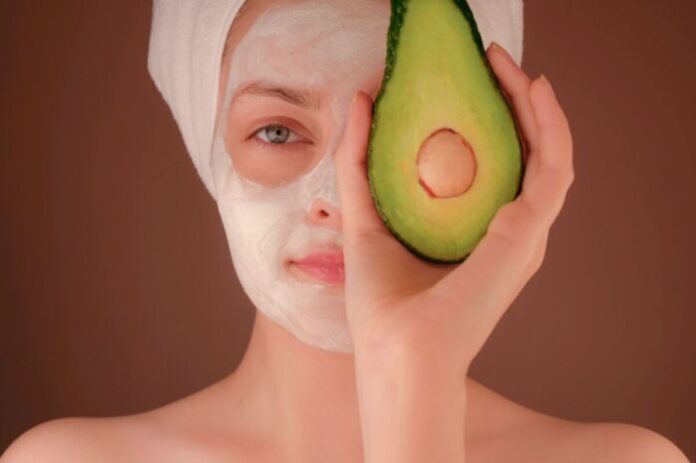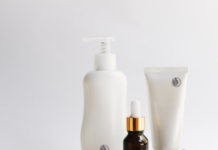
The summer climate greatly affects the appearance of oily skin. It seems to us that the sun’s rays are able to dry excess sebum, erase pimples and make the skin of the face and body appear less greasy and more uniform. But it is only a superficial impression. In part, it is the tan that hides the small skin imperfections that afflict us so much, such as open and closed comedones or inflamed boils.
In fact, direct exposure to the sun, combined with sea salt or chlorine from the pool, helps to dehydrate the acne-prone skin, which reacts by producing a greater amount of sebum. In addition, the sun also causes thickening of the skin, which is how the skin tries to protect itself from the action of UVA and UVB rays. This skin thickening prevents the sebum from flowing out normally so the product of the sebaceous glands and other impurities tend to accumulate. All this, however, is noticeable only in the long term, i.e. at the change of season. When the weather gets colder and the tan begins to go away, acne becomes visible again.
Also in this case, nature has provided us with many plant derivatives used in cosmetics that have an efficacy, proven by university studies, equal to or greater than the active ingredients created in the laboratory.
The natural ingredients in your acne cream
Among the cosmetic products for oily skin and for the treatment of acne, whether they are creams, lotions or cleansers, we can find in their composition, among others, the following substances: Argania spinosa Kernel Oil, Sesamum indicum Seed Oil, Serenoa serrulata Fruit Extract, Beta-Sitosterol, Tocopherol.
In detail, these substances have their own specific cosmetic function in the treatment of oily skin:
- Argania spinosa Kernel Oil: it is the famous Argan oil which in this mixture is used as a solvent to disperse the active ingredients. Argan oil, a particularly dry oil and therefore suitable for oily skin, is a fundamental oil in the treatment of acne and to promote the healing of the signs that this problem entails. The presence of linoleic acid also helps reduce inflammation caused by acne;
- Sesamum indicum Seed Oil: Sesame seed oil particularly suitable as a product for the face, especially in case of oily and dull skin. It is absorbed very quickly and helps to rebalance the production of sebum;
- Serenoa serrulata Fruit Extract: the berries of Serenoa serrulata, also known as Saw Palmetto, favor the regulation of sebum production by the sebaceous glands;
- Beta-Sitosterol: It is a vegetable fatty acid found in many fruits, vegetables, nuts and seeds. It is similar to cholesterol and applied to the skin, it deeply hydrates and has an anti-inflammatory action;
- Tocopherol: Tocopherol (Vitamin E) exerts a sebum-regulating action. Vitamin E is often used to produce cosmetics that restore sebum, both in creams and in shampoos (for oily hair). These cosmetics deeply refresh the skin, cleansing it of excess fat and without dehydrating it.
These substances have been the subject of two in vivo dermatological studies in the public domain. The first study was carried out with only three substances, Argan kernel oil, Sesame seed oil and Serenoa berry extract. The substances were placed in a cream indicated for the treatment of oily skin with acne applied twice a day for 30 days. At the end of the treatment, through instrumental measurement on the volunteers, a decrease of the occasional sebum equal to 20% was found. The second study was carried out with all the substances always placed in a cream indicated for the treatment of oily skin with acne applied once a day for 90 days. At the end of the treatment, through instrumental measurement on the volunteers, a decrease in stable sebum of 46% was found.
These studies were conducted with a concentration of this mixture of substances equal to 5% so they should be among the first places in the list of ingredients of cosmetic products because they have an effective concentration.
Spirea Ulmaria, a cure-all in cosmetics and medicine
In the case of oily skin with severe inflammation due to acne, in addition to the substances mentioned, the list of ingredients should also contain the extract of Spirea Ulmaria (Spiraea ulmaria) due to its presence of Salicylic Acid.
Salicylic acid takes its name from the willow, a plant from which it has been extracted since ancient times, as well as from Spirea ulmaria. In the years following its discovery, salicylic acid was mainly used in the medical field. It was used as an antipyretic, antirheumatic and anti-inflammatory. However, after years of study, researchers realized that in its pure form it was too irritating to the gastric and esophageal mucosa, which is why it was used less and less in medicine.
However, its acetylated form, acetylsalicylic acid, is still one of the best known drugs in the world: aspirin. The name derives from the Spirea ulmaria, the plant from which the pharmaceutical company extracts the acid. Today salicylic acid is used in cosmetics and dermatology for its incredible benefits for the skin.
Salicylic acid has become a real “must have” in every cosmetic line due to its incredible effectiveness in fighting acne in all its types. This effectiveness is mainly due to a double action that plays on the skin affected by this imperfection. It penetrates inside the hair follicles and eliminates dead cells (keratin plugs) that cause occlusion, thus counteracting papules, pustules and blackheads. At the same time, by rapidly penetrating inside the acne lesions, inflammation decreases thanks to its bacteriostatic and soothing properties.
In choosing the most suitable cosmetic for our oily skin, we should keep in mind that all petroleum derivatives and synthetic polymers (silicones) favor the occlusion of the pores by increasing the shine effect due to the fat on the skin. We can find cosmetics with more natural and more eco-sustainable dermo-related bases.






































